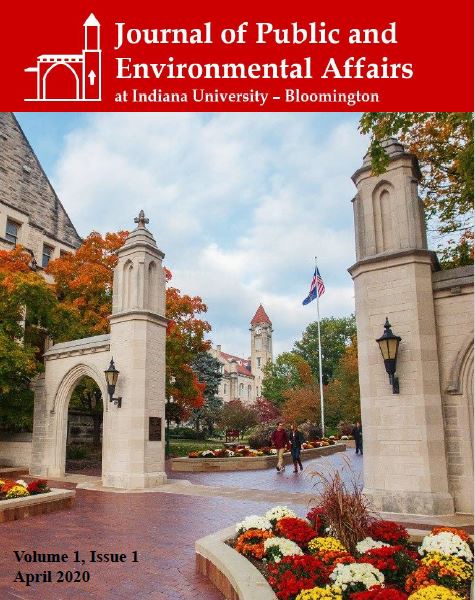Historic HOLC Redlining in Indianapolis and the Legacy of Environmental Impacts
Main Article Content
Abstract
Redline mapping was adopted by the Home Owner’s Loan Corporation (HOLC) in the 1930s to help assess its lending risk based on observable characteristics in urban neighborhoods across the United States, but the practice has been criticized for evident racial discrimination in addition to financial risk assessment. Researchers have demonstrated that modern urban tree canopy cover is lower in the historically redlined zones of four US cities. This article focuses on Indianapolis, Indiana, where a HOLC map was developed in 1937. Analysis using a geographic information system (GIS) was conducted in order to detect evidence of ecological legacies of redlining. Using this method, evidence of relatively high-intensity development, low greenspace and forest cover, and disproportionately high incidences of brownfield sites, Superfund sites, industrial waste sites, and Interstate highways were detected in historically redlined zones in Indianapolis. While opportunities for further and more detailed research are considered, the method employed here should be developed such that it is replicable for other cities with redlining histories in Indiana and other surrounding states with comparable spatial datasets. This example protocol can be adopted and refined by various stakeholders to establish where the need may exist for programmatic solutions and to better inform policy recommendations.
Downloads
Article Details
The Journal of Public and Environmental Affairs (JPEA) publishes online and in print with the Indiana University Libraries. The print journal is printed by Indiana University Press. This Author Contract presents the terms and conditions necessary for publication with JPEA.
In general, authors retain all rights to works they produce (unless the works were written under a grant or you transferred your rights in writing--if either of these are true you should check to be sure you still own the copyright in your work). Since you have copyright to your work, JPEA needs your permission (also called a license) to publish and archive your work. By signing this form, you give permission as provided below. Essentially, the permission allows JPEA to publish your work, post it online and preserve it for the long term through IU Libraries.
The license you grant JPEA in this contract is non-exclusive, which means that you can enter into other non-exclusive license agreements as you see fit. Like all forms of scholarly publishing, print or digital, some publishers will not want to republish material that has already been published. If you offer your work to another publisher, you should tell them it has been previously published in JPEA.
JPEA will, by default, assign a Creative Commons Attribution-Non Commercial 4.0 International License (CC-BY-NC) to all published works. However, authors are allowed to choose their own Creative Commons license type, or no license, provided that choice is indicated in the agreement below. Authors are encouraged to learn more about Creative Commons licenses at https://www.creativecommons.org.

